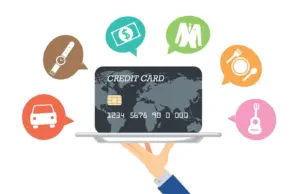The world of credit cards can be complex, with a dizzying array of options, each promising a different set of benefits. Among the most strategic and useful types for specific financial situations are Purchase & Balance Transfer cards. These cards are a powerful tool for anyone looking to manage existing debt more efficiently while also having a credit line for new purchases.
This detailed guide will demystify the Purchase & Balance Transfer card, explaining what it is, who it’s for, its key features, and a step-by-step process on how to apply for one. We’ll also cover crucial considerations to ensure you make the most of this financial product without falling into common traps.
What is a Purchase & Balance Transfer Card?
At its core, a Purchase & Balance Transfer card is a credit card that offers two distinct benefits, usually for a limited promotional period:
- Balance Transfer: It allows you to move existing debt from one or more credit cards or loans to the new card. The key advantage is that this transferred balance typically comes with a 0% or low introductory Annual Percentage Rate (APR) for a specific period (e.g., 12, 18, or 21 months).
- New Purchases: Simultaneously, the card offers the same 0% or low introductory APR on any new purchases you make during the promotional period.
This dual functionality is what sets it apart from a standard Balance Transfer card, which only offers the promotional rate on the transferred debt. The Purchase & Balance Transfer card gives you a “breathing room” on both your old debt and any new spending, making it an incredibly versatile tool for financial management.
Who is This Card For?
This type of card is ideal for two main groups of people:
- Individuals with Existing Credit Card Debt: If you are paying high interest on one or more credit cards, a Purchase & Balance Transfer card can be a game-changer. By moving the debt, you can dedicate your payments entirely to the principal amount, allowing you to pay it off much faster and save a significant amount in interest. This is particularly effective if you can pay off the entire balance before the introductory period ends.
- Individuals Planning a Large Purchase: If you have a major expense on the horizon—such as a home appliance, a vacation, or new furniture—this card allows you to make that purchase and pay it off over an extended period without accruing interest. This can be a much better option than taking out a personal loan or using a card with a high standard APR.
It’s important to have a solid plan in place. This card is not a long-term solution for spending beyond your means. Instead, it’s a strategic tool for a defined period to help you reach a specific financial goal.
The Key Features to Look For
When shopping for a Purchase & Balance Transfer card, you should compare the following features carefully:
- Introductory APR Period: This is the most important feature. The longer the 0% or low-interest period, the more time you have to pay down your debt. Periods can range from 6 to 21 months, with longer periods being more desirable but often requiring a higher credit score.
- Balance Transfer Fee: Most cards charge a fee to transfer a balance, typically a percentage of the amount you are transferring (e.g., 3-5%). This fee is a one-time cost and is added to your total balance. You must factor this into your calculations to determine if the interest you’ll save outweighs the transfer fee.
- Regular APR: After the introductory period ends, the card’s regular APR will apply to any remaining balance. This rate is usually variable and based on your creditworthiness. It is crucial to know this rate, as it’s what you’ll be paying if you don’t clear the balance in time.
- Credit Limit: The credit limit you are approved for will determine how much debt you can transfer and how much you can spend. Ensure the limit is high enough to accommodate your transfer and any planned purchases.
- Annual Fee: Many of these cards have no annual fee, which makes them an even more attractive option. However, some premium cards may charge a fee in exchange for additional perks.
How to Apply for a Purchase & Balance Transfer Card
The application process for these cards is straightforward, but it’s essential to be prepared to maximize your chances of approval.
Step 1: Check Your Credit Score Lenders use your credit score to assess your creditworthiness. A higher score increases your chances of approval and may qualify you for better terms, like a longer introductory period or a lower regular APR. You can get a free credit report from services like Experian, TransUnion, or Equifax. Aim for a good to excellent credit score (typically 670 or higher) for the best offers.
Step 2: Research and Compare Cards Don’t just apply for the first card you see. Use comparison websites or visit the websites of major financial institutions to compare different Purchase & Balance Transfer cards. Pay close attention to the features mentioned above: the length of the introductory period, the balance transfer fee, the regular APR, and any annual fees.
Step 3: Prepare Your Financial Information Before you apply, have all your necessary information on hand. This typically includes:
- Your full name and contact information.
- Your Social Security Number.
- Your home address (and previous addresses if you’ve moved recently).
- Your annual gross income and employment details.
- Information about your existing debts, including the names of the creditors and the balances you wish to transfer.
Step 4: Submit Your Application You can typically apply online, which is the fastest and easiest method. The online application will ask for all the information you prepared in the previous step. Be honest and accurate. A single application takes only a few minutes to complete.
Step 5: Await Approval and Transfer the Balance After submitting your application, you may receive an instant decision. If approved, the card will be mailed to you. Once you receive it, you can initiate the balance transfer. This is usually done online through your new card’s account portal. You will need the account number and the amount you want to transfer for each of your old credit cards. The transfer can take anywhere from a few days to a couple of weeks to process.
Crucial Best Practices and Common Pitfalls
To make this card a success, keep the following in mind:
- Create a Repayment Plan: Before you transfer your debt, calculate how much you need to pay each month to clear the balance before the promotional period ends. Stick to this plan rigorously.
- Avoid New Debt: The promotional rate on new purchases can be tempting, but it can also lead to a new cycle of debt. If you use the card for new purchases, ensure you can pay them off in full each month, or at least before the introductory period ends.
- Know the Fine Print: Be aware that the 0% APR on new purchases and balance transfers may have different expiration dates. Also, if you miss a payment, the promotional rate is often revoked, and the high regular APR will kick in immediately.
- Don’t Close Your Old Accounts Immediately: Keep your old credit card accounts open after transferring the balance. This can help maintain your credit score by keeping your credit utilization ratio low. Once you are sure the transfer is complete, you can safely cancel the old accounts if you wish.
Conclusion
A Purchase & Balance Transfer card is a powerful financial instrument when used correctly. It offers a unique opportunity to consolidate debt, save on interest, and manage new expenses responsibly. By understanding its features, planning your repayment strategy, and being disciplined with your spending, you can use this card to take a significant step toward achieving your financial goals. Remember, the key is to use the card as a tool for financial progress, not as a license to accumulate more debt.







